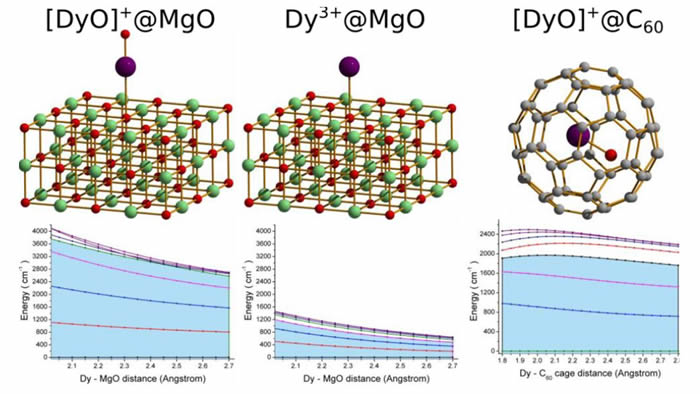Postdoctoral Research Associate, 2010-2018, FWO, KU Leuven, Belgium; Lund University 2015-2016; M.Sc. 2006, Ph.D., 2010, KU Leuven, Belgium; B.Sc. 2004, M.Sc. 2005, State University of Moldova.
Contact Information:
Office: MD1-05-03A
Tel: (65)-6601-7502
Fax: (65)-6779-1691
Email: chmlu@nus.edu.sg
1) Ab initio crystal field

A fully ab initio methodology is proposed for the extraction of the complete set of crystal field parameters defining the splitting of the ground J-multiplet of lanthanide complexes. It is shown that straightforward increase of computational effort (double 4f-shell included in the active space, dynamical correlation via XMS-CASPT2, etc.) leads to a significantly better description of the electronic spectrum and properties of the investigated Er-trensal compound. The electrostatic contributions to CF parameters in this complex, calculated with true charge distributions in the ligands, yield less than half of the total CF splitting, thus pointing to the dominant role of covalent effects. This analysis allows the conclusion that ab initio crystal field is an essential tool for the decent description of lanthanides.
2) Single-molecule magnets

Lanthanide-based single-molecule magnets are leading materials for achieving magnetization blocking at the level of one molecule. In this paper, we examine the physical requirements for efficient magnetization blocking in single-ion complexes and identify the design principles for achieving very high magnetization blocking barriers in lanthanide-based compounds. The key condition is the preponderant covalent binding of the Ln ion to one of the ligand atoms, tremendously enhancing the axial crystal field. We also make an overview of practical schemes for the implementation of this principle. These are (1) the effective lowering of the coordination number via displacement of the Ln ion to one of the atoms in the coordination polyhedron, (2) the design of two-coordinated complexes, and (3) the stabilization of diatomic compounds in cages and on surfaces. The last proposal is appealing in connection to spintronics applications, especially via the exploration of robust and highly anisotropic [LnX] units displaying multilevel blocking barriers of thousands of Kelvin and prospects for room-temperature magnetization blocking.
3) Non-collinear magnetism

Single-molecule toroics (SMTs) are defined, by analogy with single-molecule magnets, as bistable molecules with a toroidal magnetic state, and seem to be most promising for future applications in quantum computing and information storage and use as multiferroic materials with magnetoelectric effect. As an interdisciplinary research area that spans chemistry, physics and material sciences, synthetic chemists have produced systems suitable for detailed study by physicists and materials scientists, while ab initio calculations have been playing a major role in the detection of toroidal magnetization and the advancement of this field.